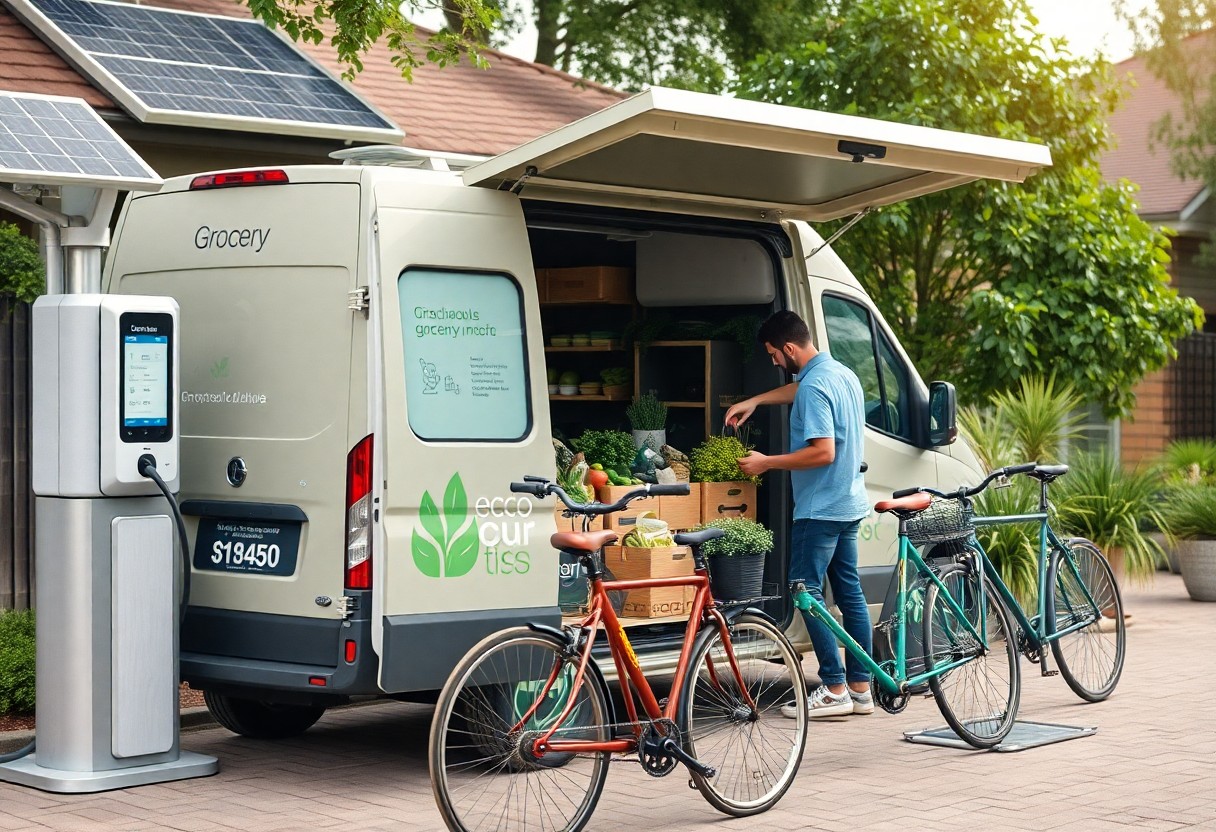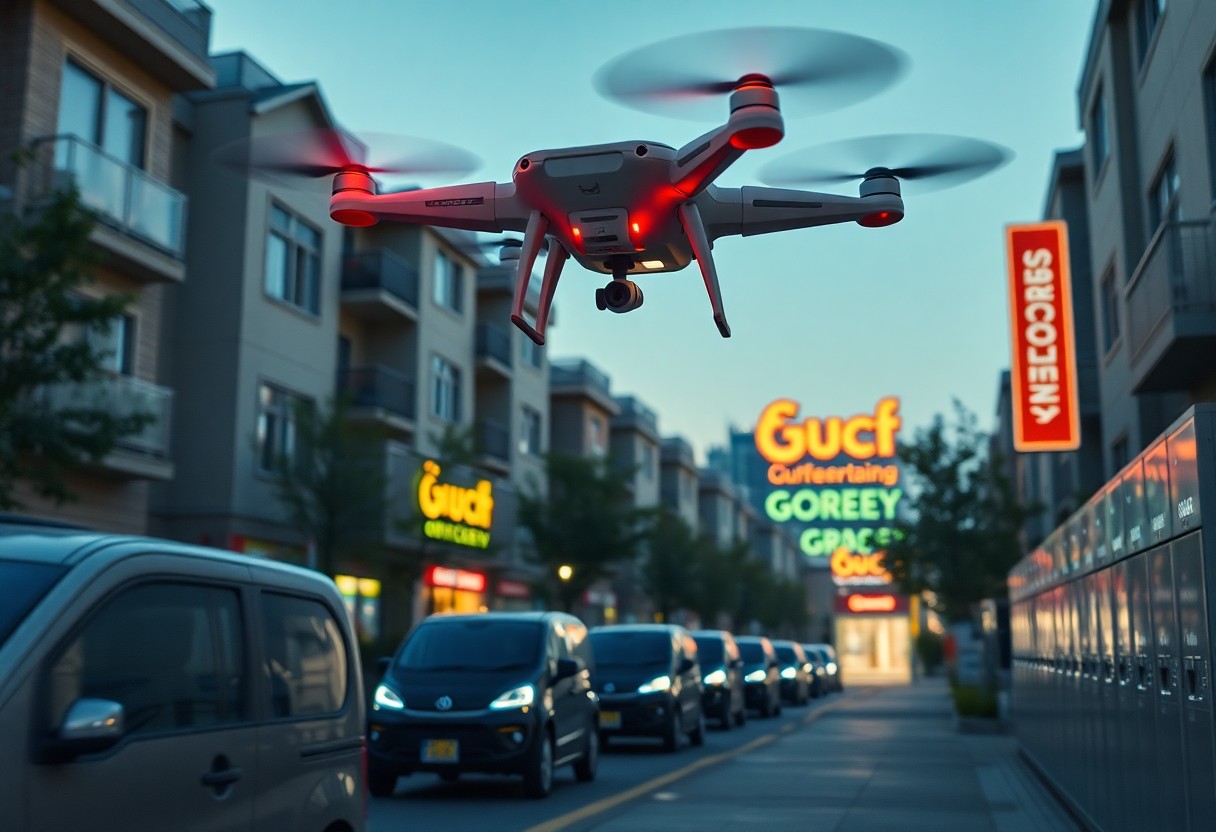Delivery options are evolving rapidly, and in 2025, you have a wealth of choices for getting your groceries right to your door. This guide will help you navigate the landscape of top grocery delivery services that excel in convenience and value. You’ll discover which platforms offer the best selections, fastest delivery times, and most competitive pricing, ensuring that your shopping experience is both efficient and affordable. Stay informed as we compare the leading services to find the perfect fit for your needs.
Overview of Grocery Delivery Trends in 2025
In 2025, grocery delivery services are seeing a shift towards greater personalization and sustainability. Consumers increasingly prefer platforms that offer tailored shopping experiences, leveraging data to enhance product recommendations. Subscription meal kits, like The Best Meal Kit Delivery Services, are gaining traction for their convenience and health-oriented options, meeting the rising demand for nutritious meals without the hassle of meal planning.
Consumer Preferences
You are likely prioritizing not only convenience but also the quality and sustainability of products. Organic options and local produce are becoming standard offerings as you seek healthier and environmentally friendly choices. User reviews and experience-based recommendations are influencing what services gain popularity, pushing businesses to focus on customer satisfaction and ethical sourcing.
Technological Advancements
The grocery delivery landscape is rapidly evolving with advancements in technology, making your shopping experience more seamless. AI-driven algorithms enhance product discovery, while robust apps streamline order tracking and payment processes for added convenience.
Voice assistants and chatbots are integrating into grocery platforms, allowing you to place orders using simple voice commands or quick text conversations. This shift is complemented by improvements in logistics, including real-time inventory updates and enhanced delivery tracking. Systems are becoming increasingly efficient, with some services offering same-day delivery and automated restocking options based on your purchasing habits, all aimed at providing a more responsive and tailored grocery shopping experience.

Top Grocery Delivery Services
Many options exist for grocery delivery in 2025, enabling you to choose based on your preferences for convenience, pricing, and variety. Services like Instacart, Amazon Fresh, and Walmart Grocery continue to dominate the market, while newer players like GoPuff and Boxed are gaining traction. Evaluating these platforms can help you maximize both convenience and savings while ensuring you get quality groceries delivered right to your doorstep.
Service Comparison
Understanding how different grocery delivery services stack up against each other can greatly enhance your shopping experience.
Service Comparison Table
| Service | Delivery Fee |
|---|---|
| Instacart | Varies, average $3.99 |
| Amazon Fresh | Free with Prime membership |
| Walmart Grocery | Starting from $7 |
| GoPuff | Delivery fee from $1.95 |
| Boxed | Free over $49 |
Unique Features
Each grocery delivery service offers unique features, enhancing your shopping experience and accommodating specific needs. For instance, Instacart provides same-day delivery from local stores, allowing you to receive products faster than traditional delivery options. Amazon Fresh stands out with its extensive selection and integration with Prime benefits. Walmart’s affordability is augmented by in-store pickup options, while GoPuff specializes in quick delivery for snacks and importants, perfect for last-minute needs. Boxed focuses on bulk orders, catering to larger households.
Consider the unique features that align with your shopping habits. If you prioritize fast access to groceries, Instacart’s local partnerships can often deliver within two hours. For bulk purchasing, Boxed’s competitive pricing on household necessities makes it advantageous for families. Amazon Fresh’s ability to shop from a vast array of items enables you to stock up on both fresh produce and pantry staples. Each service tailors its offerings to specific customer preferences, making it important to choose the right one for your needs.
Pricing and Value Analysis
Understanding the pricing structures of grocery delivery services is important for maximizing value. Each service offers varying delivery fees, subscription plans, and discounts, making it crucial to analyze these aspects according to your shopping habits. For insights on how to find the right grocery delivery service for you, consider factors like frequency of use and local availability.
Delivery Fees
Delivery fees typically range from $3 to $10, depending on the service and your order amount. Some platforms waive the fee for orders over a certain threshold, while others might charge a flat rate. Take note that peak delivery times may incur additional costs, impacting your total spend.
Subscription Options
Subscription plans can provide significant savings, offering benefits like free deliveries or discounted rates. Many services present monthly or annual subscriptions that might suit regular shoppers. A yearly subscription can save you even more, especially if you frequently order groceries online.
Explore subscription options like Amazon Fresh, which offers a monthly fee for unlimited deliveries, or Instacart’s Express membership that provides reduced delivery charges. For those who order sporadically, a pay-as-you-go model might be more cost-effective. Evaluating your shopping patterns will ultimately help you choose the best plan for your needs.
Customer Experience and Satisfaction
Customer experience and satisfaction serve as the cornerstone of any grocery delivery service’s success. Emphasizing user-friendly interfaces, timely deliveries, and responsive customer support, top services strive to enhance your shopping journey. Understanding and acting on customer feedback is critical for providers aiming to improve their offerings and retain loyal clientele.
User Reviews
User reviews provide valuable insights into the strengths and weaknesses of each grocery delivery service. By examining ratings and testimonials, you can gain an understanding of the general customer sentiment, revealing patterns in delivery punctuality, product quality, and service reliability. Positive feedback often highlights exceptional customer service, while negative reviews may point out persistent issues that could affect your decision.
Service Reliability
Service reliability is a determining factor in choosing a grocery delivery service. Consistent on-time deliveries and accurate order fulfillment are non-negotiable expectations. Examples from leading platforms showcase how technology, including route optimization algorithms and real-time tracking, enhances reliability. You should assess the delivery service’s track record carefully to ensure that your groceries arrive precisely when promised.
In-depth analysis of service reliability illustrates the importance of logistics and operational efficiency in grocery delivery. For instance, companies like Instacart and Amazon Fresh utilize advanced routing technology that minimizes delays and maximizes efficiency, frequently achieving over 95% on-time delivery rates. Providers also invest in training their staff to ensure accurate picking and packing, directly impacting your satisfaction. Reliability ultimately dictates whether you’ll choose to reorder from the service, reinforcing the need for providers to maintain high standards consistently.

Eco-Friendly Practices in Grocery Delivery
Grocery delivery services are increasingly incorporating eco-friendly practices that align with consumer values. From reducing reliance on unsustainable resources to utilizing greener technologies, these platforms are redefining convenience without compromising environmental responsibility. Options such as electric delivery vehicles and partnerships with local farms minimize overall environmental impact while ensuring you receive fresh produce.
Sustainable Packaging
Many grocery delivery services are now prioritizing sustainable packaging solutions to reduce waste. You might notice that your groceries arrive in recyclable or biodegradable materials rather than traditional plastic. This shift reflects a broader commitment to minimizing your carbon footprint while maintaining the freshness and safety of your food products.
Carbon Footprint Reduction
Reducing carbon emissions has become a key focus for many grocery delivery platforms. By optimizing delivery routes and using energy-efficient vehicles, companies can lower their overall emissions. Some services even calculate and offset their delivery-related carbon footprints, allowing you to shop with a conscience.
For example, companies that utilize advanced route optimization software can significantly decrease the total miles driven, leading to lower fuel consumption and emissions. A recent study highlighted that services employing electric vehicles reported an average reduction of 40% in carbon emissions compared to traditional delivery methods. Engaging in partnerships with carbon offset programs allows you to contribute to environmental restoration efforts, adding value to your grocery shopping experience beyond just food delivery.

Future Outlook of Grocery Delivery Services
The grocery delivery landscape is rapidly evolving, with technological advancements and changing consumer preferences shaping the future. By 2025, expect Top 15 Grocery Delivery Apps Dominating Global Markets in 2025 to integrate AI and automation for personalized shopping experiences, making meal planning and shopping seamless. Sustainability will also take center stage as eco-friendly packaging and local sourcing become vital for consumer appeal.
Emerging Trends
Mobile shopping continues to grow, with an increasing number of consumers preferring to order groceries through apps rather than visiting stores. Enhanced user experience through smart features like voice ordering and augmented reality for product visualization will soon become standard. Collaboration with local farmers will also gain traction, as consumers seek more fresh and sustainable produce options delivered right to their doorsteps.
Market Predictions
The grocery delivery market is projected to expand significantly, with estimates reaching over $200 billion globally by 2025. Major players will enhance their logistics capabilities, reducing delivery times to under one hour in urban areas. Customer loyalty will increasingly hinge on factors like speed, quality, and the ability to cater to specific dietary needs, pushing businesses to innovate continually.
As demand increases, a shift towards subscription-based models is evident, offering consumers regular deliveries and discounts for loyalty. The rise of community-supported agriculture programs is also expected to redefine local grocery delivery. This transformative approach aligns with consumer expectations for fresh, local goods. Overall, your choices as a shopper will expand, driven by competition and technological advancements in grocery delivery services.
Conclusion
Ultimately, as you navigate the landscape of grocery delivery services in 2025, prioritizing convenience and value will enhance your shopping experience. By evaluating top platforms based on their delivery speed, product variety, and user-friendly interfaces, you can make informed choices that suit your needs. Embrace the options that align best with your lifestyle, ensuring that you enjoy the benefits of modern grocery shopping without compromising on quality or cost.
FAQ
Q: What are the top grocery delivery services in 2025?
A: The top grocery delivery services in 2025 include Instacart, Amazon Fresh, Walmart Grocery, Shipt, and FreshDirect. Each service offers unique features, delivery options, and product selections tailored to different consumer needs.
Q: How do grocery delivery services ensure the freshness of products?
A: Grocery delivery services utilize temperature-controlled transport, quick delivery times, and partner with local stores for same-day deliveries to maintain product freshness. They also typically provide quality guarantees for perishable items.
Q: Are there any subscription fees for grocery delivery services?
A: Many grocery delivery services offer subscription plans that may include a monthly or annual fee for benefits like free delivery and special discounts. However, there are also options for pay-per-delivery that allow users to order without a subscription.
Q: How do delivery fees vary among different grocery delivery services?
A: Delivery fees can vary widely, ranging from free for members of subscription plans to flat fees or delivery fees based on order size. Some services offer promotions or discounts for first-time users or large orders.
Q: Can I schedule deliveries in advance with grocery delivery services?
A: Yes, most grocery delivery services allow users to schedule deliveries in advance. This feature enables customers to choose specific time slots for convenient delivery according to their availability.